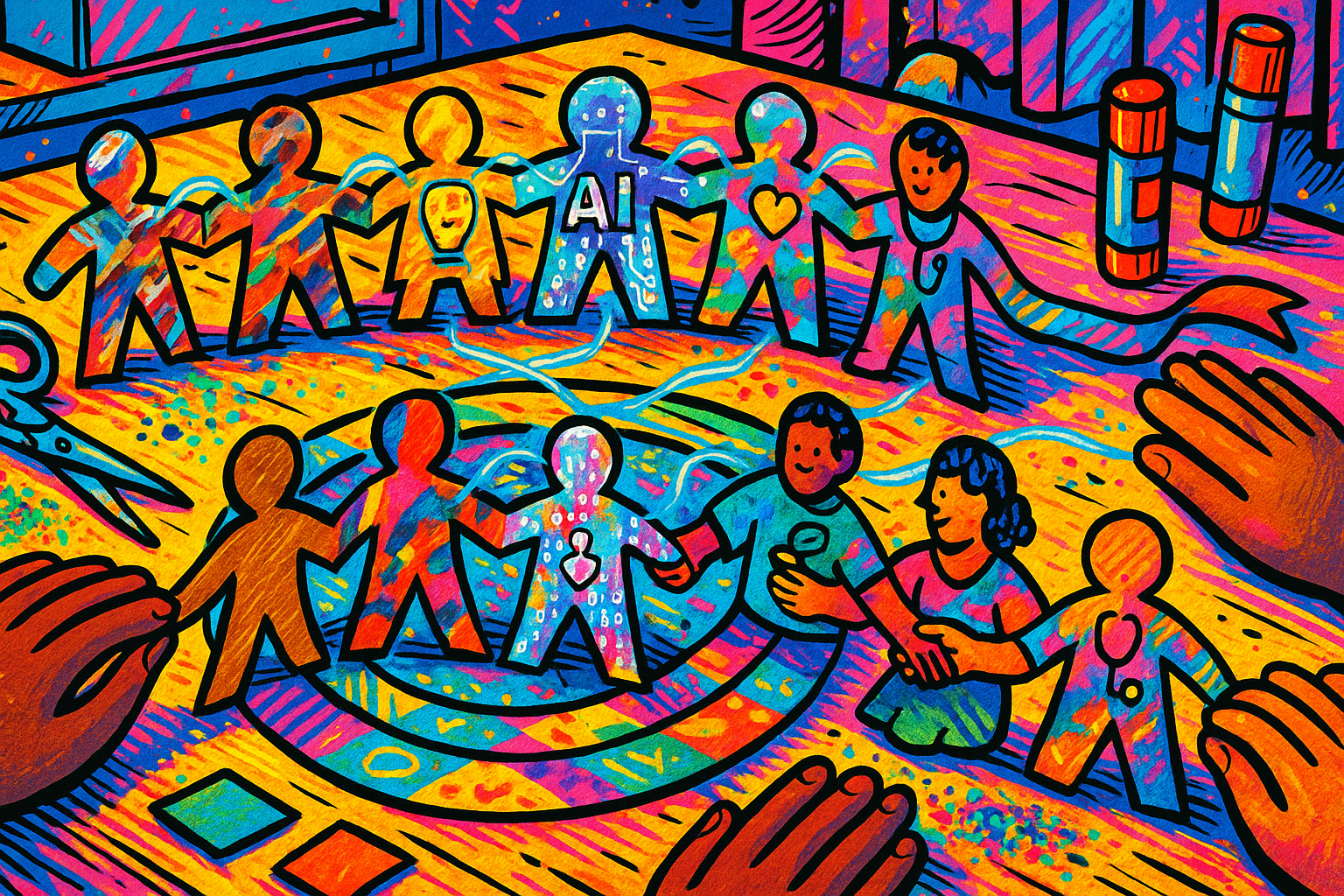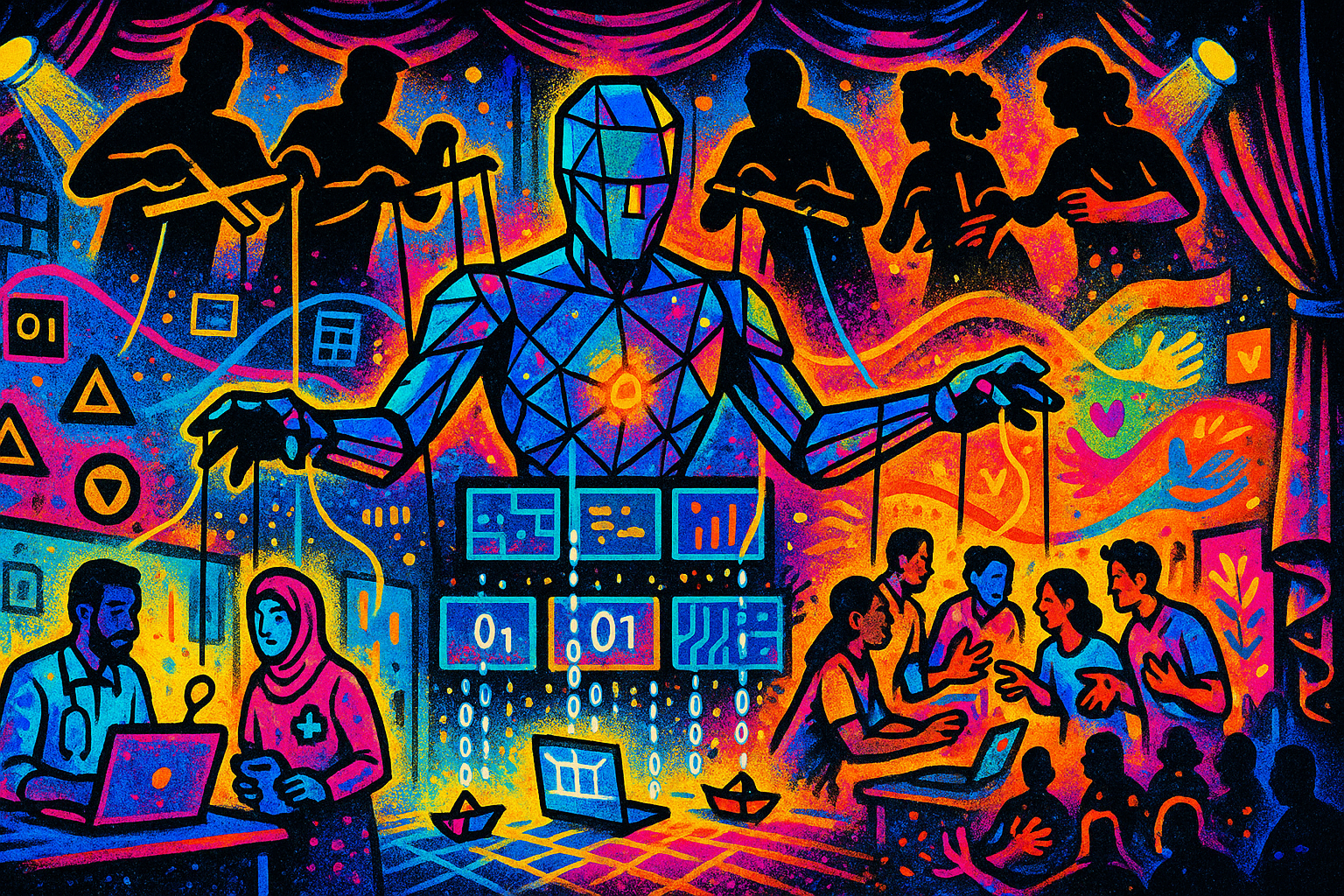This article is in two parts, the first deals with how AI leadership is today and is informed by research and conversations. The second part is on how AI could affect leadership in the future, which is more based on some of the early changes that are being observed across different sectors.
The AI Inflection Point
Leadership and management are in a state of flux because of AI. Healthcare systems like the NHS have spent decades grappling with digital transformation. The leadership and management are one of the essential requirements that prove the difference between triumph and disappointment. Now, the NHS has been given a vision to be the most AI enabled healthcare system and so the drive to adopt AI intensifies. Leaders and managers face a new and formidable challenge: not just enabling change, but reimagining leadership and management itself.
Tomorrow’s leaders will bear little resemblance to those of today.
And so are living through two distinct yet overlapping phases. The first: transformation as AI is being adopted and uncertainty navigated. The second: when the AI-enabled workforce becomes mainstream, a world where AI saturates every process which needs leadership and management to be transformed.
Both phases place unprecedented demands on leaders and managers but will require drastically different skills, knowledge and competence.

Phase 1: Transformation
This initial phase of AI implementation which is happening today has echoes of the digital journeys of the past. Leaders and managers must enable their organisations to transform through AI adoption while navigating uncertainty and tension in trust, safety, ethics and purpose.
· Having AI literacy and confidence: Leaders and managers with a good grasp what AI can and cannot do are best placed to decide on the priorities and recognise the risks. It means being confident and capable to use data to understand gaps and need, and so make sharper, more agile decisions. But it also means being able to build and lead multi-disciplinary teams who have clinical, technical or operational expertise and support them to have shared understanding avoiding the jargon.
· Shatter the silos: Technical experts, clinicians, operations, information governance, legal, safety, and patients must collaborate. It’s on leaders to assemble, empower, and clarify these cross-functional teams, set clear decision rights, and give them the mandate and headspace to drive solutions end to end. Leaders must elevate the conversation above technical jargon and professional divides, forging shared understanding.
· Governance that enables: Cross-professional teams need transparency and permission. Governance with clear priorities, accountability, and ethical processes must underpin the approach to AI prioritisation, testing and deployment.
· Focused on strategy: AI can be overwhelming so it is essential to set priorities and celebrate early wins to build momentum. The failures are learning opportunities and no implementation of technology goes 100% perfectly as planned so open learning build confidence and knowledge.
· Be the experimenters too: Leaders must normalise experimentation with AI. This means role modelling trying, failing, learning, and communicating openly about both successes and setbacks. It sets expectations and shows it is important.
· Cultivate psychological safety: Staff are understandably concerned about AI, it could mean job losses, dehumanisation or a job they no longer want to do. So they need to have the space and opportunity to shape the AI use, priorities and implementation. They need to be supported to reskill, pivot, and voice concerns. This means targeted training and strategic hiring to bridge the AI skills gap, build confidence and help usher in an AI enabled workforce.
Leading and managing AI transformation is about being technically savvy enough to ask the right questions, brave enough to ask basic questions, forging genuine cross-functional relationships, and figuring out where AI truly adds value.

Phase 2: Creating the future of leadership
Phase 1 is about holding and navigating the storm of transition, phase 2 is existing in the dawn after: a workplace where AI is the default. There are no answers to what this will look like but there are tantalising hints. There are many questions which we need to surface, ask and explore. We need to ask what does it mean if leaders are using AI to mimic their way of writing or speaking? What happens to professions, team structures and hierarchy if AI replaces the majority of administrative tasks? How do the responsibilities of managers change if AI does more scheduling and task allocation? And, perhaps most importantly, what type of workplace do we want one where AI micromanages people or one where AI enables more independent decision making for all staff?
AI is trumpeted to be able to do everything but how well it does anything can be highly variable from use to use. However, it is continually getting better and there’s hints of the future emerging. AI can craft communications in specific styles and mimic tone of voice, it can replicate a persons voice and even imagery in video. So it can create communications at unimaginable scale and frequency saving time. We’re already seeing leaders using these tools to aid communication, some leaders are going further to create digital twins massively automating the communication roles they have. But when teams suspect their leader and manager is actually “just” an AI tool output, research shows trust collapses in an instant! Future leaders will likely rely on transparent AI use for routine communication, but must also be more capable than today on giving authentic and unscripted communication. The paradox: in an era of effortless, highly scripted and polished AI-generated messages, genuine, face-to-face interaction that is raw, honest, and human will become an essential component of leadership.
In order to support this, new roles are emerging that can be considered analogous to “AI scriptwriters” or editors. People tasked with curating and fact-checking AI-crafted content, ensuring it aligns with both the leader’s authentic voice and the organisation’s values.
Some organisations are already appointing new roles such as AI Executive Support Specialists. These hybrid roles blend assistant responsibilities with AI expertise. They become responsible for selecting and managing AI tools, generating and coordinating AI insights, and facilitating leadership team development. In an era of AI-augmented leadership the teams may include people who bridge the gap between AI and vibes. Leaders will need the confidence and insight to oversee AI while still forging deep connections across their teams. This is so they can understand the AI insights and limitations, the cultural and relational needs to make decisions in areas of uncertainty and tension.
As routine work shrinks, technical, strategic, relational and creative roles expand. The team around leaders and managers will change.
With AI doing more administrative type activity and so freeing up peoples time it will affect organisational structure and hierarchies creating further change on what is expected of managers and leaders. Less time spent on administration and more time on data insight with AI governance means leaders and managers could oversee larger and more diverse teams. They are likely to need to become coaches and mentors, building relationships, culture and team cohesion. Research indicates communication, critical thinking, emotional intelligence, and interpersonal acumen will become more important in the AI-augmented workplace. As AI crunches data and these have limits, leaders must hone their ability to understand, inspire, and empower people. Leadership and management will become ever more relational, collaborative, and human.
The future leader at the cross roads
The future I’ve teased out and described above based on the changes we’re seeing is positive and compelling but not inevitable. There are hints of a less positive change to leadership, management and the workplace.
Algorithms are already “managing” people in areas like gig work. These algorithms do things like scheduling tasks, predicting completion times, and even monitoring and scoring workers. Then staff buy tools to avoid being monitored or to deceive the algorithms! One possible and more negative future is where leaders manage AI while AI micromanages individuals who then have less autonomy and agency.
The more compelling alternative?
Leadership as a collective, relational, person-centred art, with AI enabling greater autonomy and agency for every member of staff so they each are a leader in their own domain, empowered by AI insights combined with their own experience. This doesn’t just flatten hierarchies; it transforms leadership into a shared, dynamic endeavour.
Achieving this will require us to take an active part to shape the narrative and co-create the future of leadership, management and the workplace together.
I hope you enjoyed this post, if so please share with others and subscribe to receive posts directly via email.
Get in touch via Bluesky or LinkedIn.
Transparency on AI use: GenAI tools have been used to help draft and edit this publication and create the images. But all content, including validation, has been by the author.

